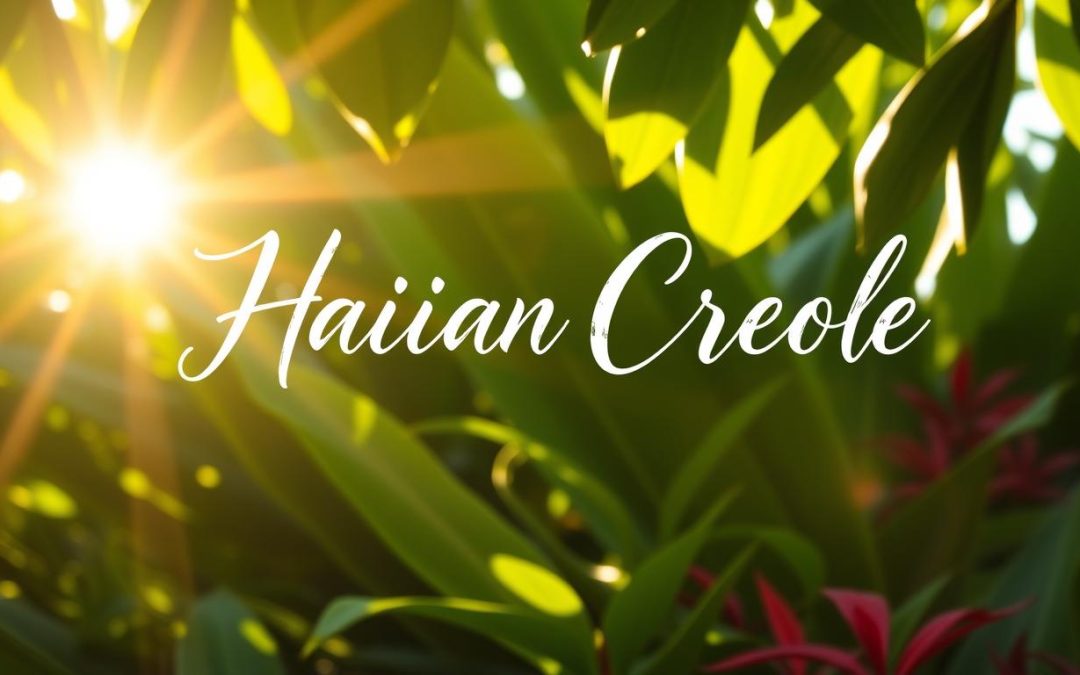Have you ever wondered how a country’s language can shape its identity? In the Caribbean, the island of Haiti offers a fascinating example. Here, two primary languages coexist, each with its own rich history and cultural significance.
French, a legacy of colonial times, is often used in formal settings. Meanwhile, Haitian Creole is the heart of everyday communication. This vibrant language blends influences from French, African, and indigenous roots, creating a unique linguistic tapestry.
Understanding these languages gives you a deeper insight into Haiti’s culture. It’s a story of resilience, adaptation, and pride. Dive in to explore how language shapes this Caribbean nation.
Key Takeaways
- Haiti has two primary languages: French and Haitian Creole.
- Haitian Creole is the most widely used language in daily life.
- French remains important in formal and official contexts.
- The island’s language reflects its colonial and African heritage.
- Language plays a key role in shaping Haitian identity.
Historical Development of Languages in Haiti
The story of language in Haiti is deeply tied to its colonial past. From the arrival of European settlers to the rise of a new creole language, each phase shaped the way people communicate today.
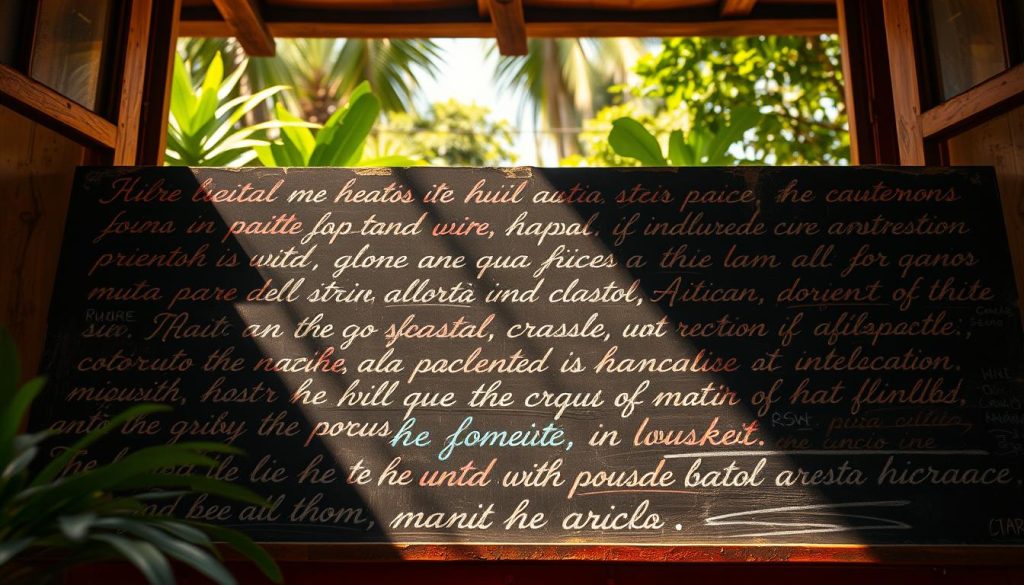
Colonial Influences and Early Settlement
When Spanish explorers arrived in 1492, they brought their language to the island. Later, French settlers took control, introducing their own linguistic traditions. This mix of European influences laid the groundwork for Haiti’s unique linguistic identity.
African slaves, brought to the island by the French, played a crucial role. Their native languages blended with French, creating a new form of communication. This creole language became a symbol of resilience and cultural fusion.
The Impact of the Revolution on Language Evolution
The Haitian Revolution in 1804 marked a turning point. As the first black-ruled independent nation, Haiti’s people embraced their creole language as a symbol of freedom. French remained in formal settings, but Haitian Creole became the heart of everyday life.
This shift reflected a broader cultural transformation. Language became a tool for unity and identity, shaping the nation’s future. Today, this rich history continues to influence how Haitians communicate and connect with their heritage.
Understanding Haitian Creole: Origins and Dialects
What makes Haitian Creole such a unique language? Its story begins in the 17th and 18th centuries, when French colonists, Taino natives, and enslaved West Africans came into contact. This mix of cultures and languages gave birth to a creole that is both rich and distinct.
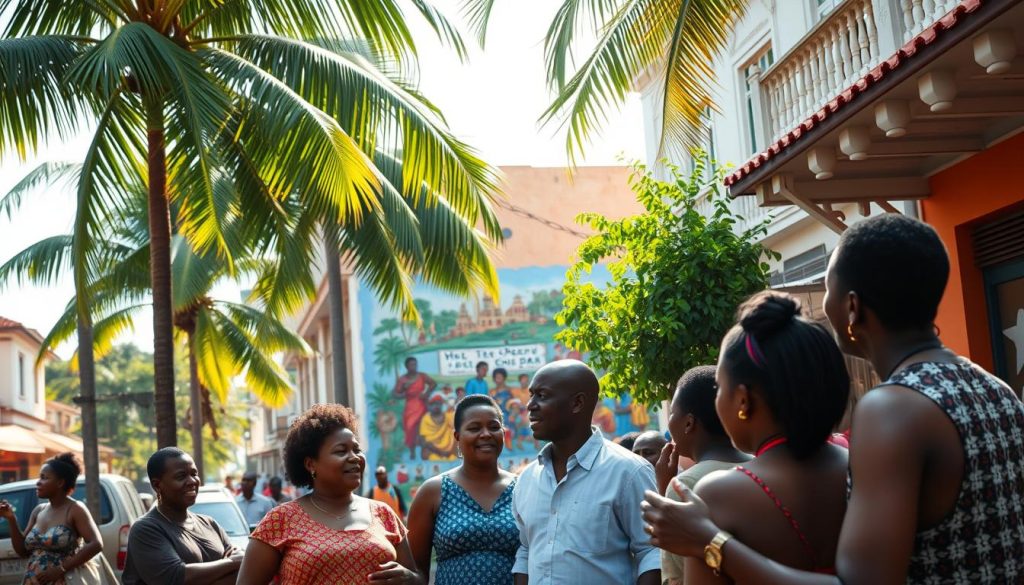
The Fusion of French, Taino, and West African Languages
Haitian Creole’s vocabulary is largely based on French, but its grammar reflects West African influences. Words from the Taino people, the island’s original inhabitants, also play a role. This blend creates a language that is both familiar and entirely new.
For example, many everyday terms in Haitian Creole come from French, but their pronunciation and usage are unique. This fusion is a testament to the resilience and creativity of the people who shaped it.
Regional Variations in Haitian Creole
Across the island, Haitian Creole is spoken in distinct dialects. The Northern, Central, and Southern regions each have their own accents and expressions. These variations add depth to the language, making it even more vibrant.
In the North, you might hear a slightly different pronunciation of certain words. In the South, unique phrases reflect local culture. These differences highlight the diversity within the creole itself.
- Haitian Creole evolved from a mix of French, Taino, and West African influences.
- Its vocabulary is French-based, but its grammar reflects African roots.
- Regional dialects add unique accents and expressions to the language.
French: Its Role in Government, Education, and Culture
French holds a unique position in Haitian society, blending prestige with exclusivity. While Haitian Creole is the heart of everyday communication, French remains a symbol of status and tradition. Its role in formal settings shapes the nation’s identity and power structures.
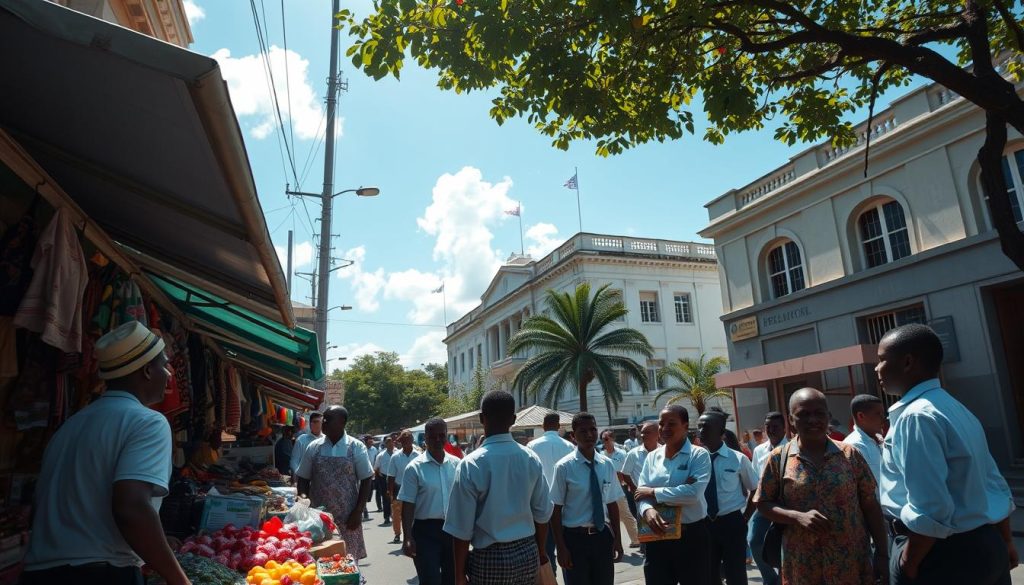
Usage in Official Documents and the Education System
In government and education, French is the dominant language. Official documents, legal proceedings, and media often rely on it. This institutionalization preserves its high-status position, even as Haitian Creole dominates daily life.
In schools, French is the primary medium of instruction. However, this creates challenges. Many students struggle with its pronunciation and grammar, leading to high dropout rates. Despite this, it remains a key part of the curriculum, reflecting its cultural significance.
Social Perceptions and the Elite’s Language Preference
For the Haitian elite, French is more than a language—it’s a marker of identity. Fluent speakers are often seen as educated and influential. This preference reinforces social divides, as only a small percentage of the population is truly bilingual.
“French is the language of power, but Creole is the language of the people.”
This duality shapes how Haitians view themselves and their culture. While French connects them to a global world, Creole keeps them rooted in their heritage. Understanding this balance offers a deeper insight into the nation’s complex identity.
Haiti: Official and widely spoken languages
In Haiti, the choice between Haitian Creole and French often reflects more than just words—it’s about identity, status, and connection. While Haitian Creole is the heart of everyday conversation, French is reserved for formal settings. This dual-language dynamic shapes how people interact, learn, and perceive themselves.
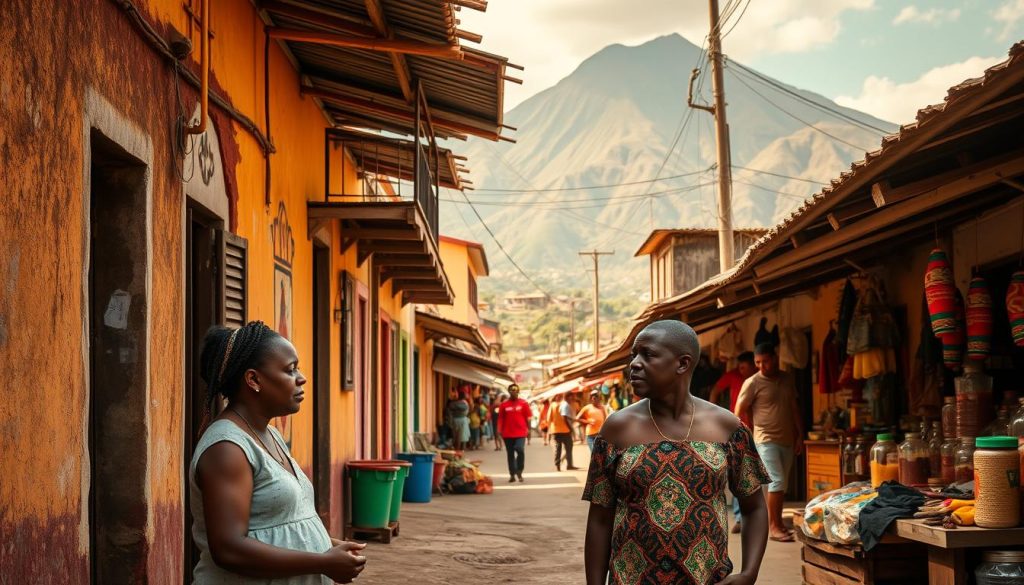
Practical Use of Haitian Creole
For most Haitians, Haitian Creole is the go-to language for daily communication. It’s used in homes, markets, and casual conversations. Its simplicity and accessibility make it a unifying force across the population.
In contrast, French is often seen as a marker of education and social status. It’s used in government documents, legal proceedings, and formal media. This creates a divide, as only a small percentage of Haitians are fluent in both languages.
How the Languages Complement Each Other
Despite their differences, Haitian Creole and French play complementary roles. Creole connects people in their daily lives, while French links them to global opportunities. This balance is essential for navigating both local and international contexts.
For example, in schools, French is the primary medium of instruction. However, this often creates challenges for students who grow up speaking Haitian Creole. Bilingualism, though beneficial, remains a privilege for the elite.
| Aspect | Haitian Creole | French |
|---|---|---|
| Usage | Daily conversations, informal settings | Official documents, formal communication |
| Fluency | Spoken by 95% of the population | Fluent speakers are a minority |
| Cultural Role | Unifies the people | Symbolizes education and status |
Understanding this dual-language system offers a deeper insight into Haitian society. It’s a story of resilience, adaptation, and the power of language to shape identity.
Minority and Foreign Languages in Haitian Society
Languages in Haiti extend beyond the familiar duo of Creole and French. In recent years, Spanish and English have begun to shape interactions, especially in border regions and tourist areas. This shift is driven by business, education, and international collaborations.
The Rising Influence of Spanish and English
In border areas near the Dominican Republic, Spanish is increasingly heard. It’s a reflection of historical ties and migration patterns. Similarly, English is gaining traction in urban centers, fueled by tourism and the diaspora.
For example, in Port-au-Prince, you’ll find English-speaking guides and business professionals. This trend highlights the growing role of international languages in connecting Haiti to the global stage.
Challenges and Opportunities for Multilingual Communication
While the rise of Spanish and English brings opportunities, it also poses challenges. Limited fluency among the majority can create barriers in communication. However, these languages also open doors for economic growth and cultural exchange.
In schools, efforts to teach English and Spanish are expanding. This prepares students for international opportunities while preserving the importance of Haitian Creole and French.
| Language | Usage | Influence |
|---|---|---|
| Spanish | Border regions, tourism | Historical ties, migration |
| English | Urban centers, diaspora | Tourism, global business |
Understanding the role of minority languages offers a deeper insight into Haiti’s evolving society. It’s a story of adaptation, growth, and the power of communication to bridge divides.
Cultural, Social, and Economic Impact of Haiti’s Linguistic Landscape
Language is more than just words—it’s a bridge to culture, economy, and identity. In Haiti, the coexistence of Haitian Creole and French creates a dynamic linguistic landscape. This duality shapes everything from daily interactions to global partnerships.
Understanding this blend offers insights into how language fuels creativity, commerce, and connection. Let’s explore how Haiti’s unique linguistic diversity impacts its society and economy.
Language as a Catalyst in Business and Tourism
In the world of business, language skills are a valuable asset. Haiti’s bilingual population opens doors to international markets. Entrepreneurs who speak both Haitian Creole and French can negotiate deals, build partnerships, and attract investments.
Tourism also benefits from this linguistic versatility. Guides fluent in English and French make visitors feel welcome. This boosts the local economy and strengthens Haiti’s global appeal.
- Haitian Creole connects people in daily life, fostering unity.
- French links Haiti to global opportunities, especially in formal sectors.
- Bilingualism enhances business prospects and tourism growth.
Initiatives promoting local language use in tourism have gained traction. These efforts celebrate Haiti’s culture while creating economic opportunities. For example, cultural tours conducted in Haitian Creole offer visitors an authentic experience.
Language also plays a role in shaping Haiti’s image on the world stage. By embracing its linguistic heritage, Haiti showcases its resilience and creativity. This strengthens its position in global culture and commerce.
Conclusion
Exploring Haiti’s linguistic diversity reveals a story of resilience and adaptation. The Haitian Creole and French languages each play vital roles in shaping daily life, education, and governance. While Haitian Creole unites the people, French connects the nation to global opportunities.
Minority languages like Spanish and English are gaining traction, especially in tourism and business. This shift highlights the island’s evolving culture and its ability to adapt to modern demands. Language remains a powerful tool for economic growth and cultural expression.
From colonial legacies to modern-day challenges, Haiti’s linguistic landscape reflects its history and aspirations. Understanding this dynamic offers a deeper appreciation of its identity and the role of language in shaping a nation’s future.
The above is subject to change.
Check back often to TRAVEL.COM for the latest travel tips and deals.
Here are some Tours & Sightseeing suggestions that might pique your interests!
